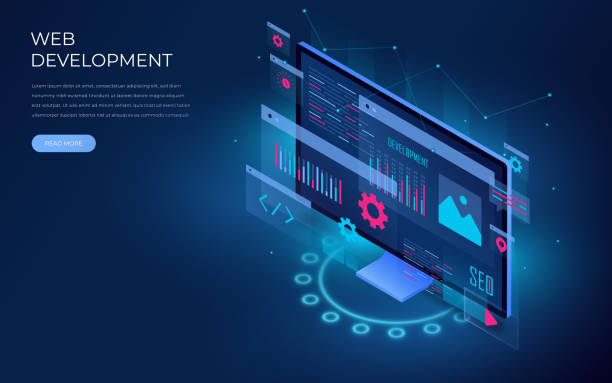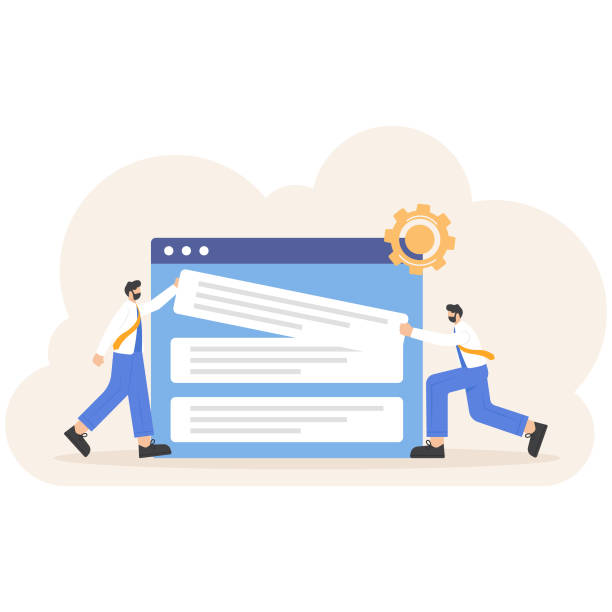1. Why is SEO-Optimized Website Design a Necessity Today?

In today’s digital world, having a website is not merely about having an online presence, but optimizing it for search engines is vital.
SEO-optimized website design is no longer considered a luxury option, but rather the backbone of any business’s success in the virtual space.
The concept of #SEO or #Search_Engine_Optimization refers to a set of techniques aimed at improving your website’s ranking in #search_engine results like Google.
When a user searches for a word, they expect to see the best and most relevant result on the first pages.
If your website is not optimized for these keywords, it practically remains hidden from thousands or even millions of users.
This is where the importance of SEO-centric website design becomes more evident than ever.
A website designed from the outset with SEO principles has a much higher chance of gaining #organic_traffic and being seen by its target audience.
This approach not only increases visits but also significantly helps in attracting potential customers and ultimately increasing sales.
In this #educational and #explanatory article, we will show you why investing in a smart SEO-optimized website design is wise and how you can design your website to shine in search results and achieve #top_ranking.
This process includes adhering to technical standards, producing valuable content, and proper structuring, each playing a significant role in your website’s visibility.
How much does losing business leads due to an unprofessional site cost you? Solve this problem forever with professional corporate website design by Rasaweb!
✅ Increased credibility and trust of potential customers
✅ Easier attraction of new business leads
⚡ Get a free consultation right now!
2. Technical and Infrastructure Principles in Search Engine Optimized Website Design
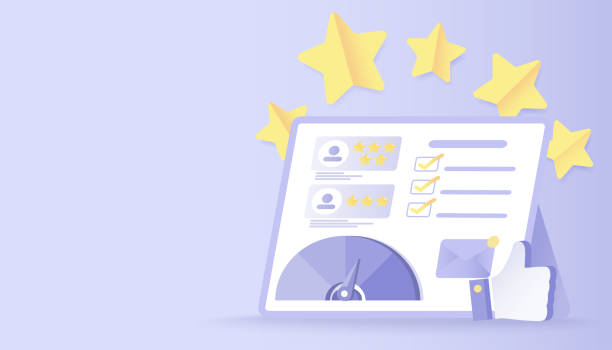
SEO-optimized website design is not limited to content and keywords; it encompasses deep technical and infrastructural principles that form the foundation of a website’s good performance in search engines.
In this #specialized section, we delve into the technical aspects that are crucial for any website aiming for top rankings in search results.
One of the most important of these principles is website loading speed.
Search engines, especially Google, give higher scores to websites that load quickly, as this provides a better user experience.
Factors influencing speed include image optimization, code compression (CSS, JavaScript, HTML), and the use of content delivery networks (CDN).
The second principle is website responsiveness (Mobile-Responsiveness).
Given the increasing use of mobile phones to access the internet, your website must be well-viewable on different screen sizes.
For years, Google has set the Mobile-First Indexing factor as its main criterion for ranking.
A suitable and readable URL structure, the use of XML sitemaps and robots.txt files to guide search engine bots, and the implementation of SSL certificates (HTTPS) for security are other key points.
These foundational principles pave the way for an optimized website design for search engines and play a significant role in the correct identification and indexing of your pages by search engines.
3. Keyword Research and its Role in SEO-Centric Content
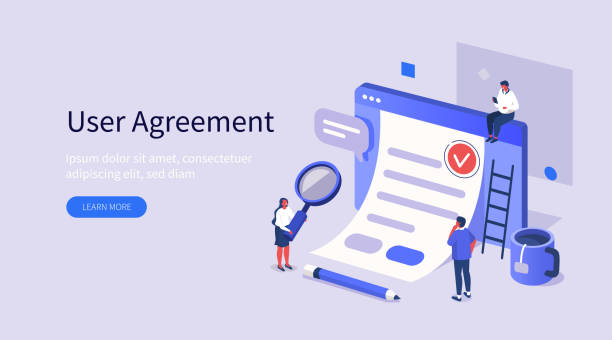
One of the most important steps in SEO-optimized website design is thorough keyword research and selection.
This #analytical and #educational stage forms the cornerstone of your content strategy, and without it, your SEO efforts may be fruitless.
Keywords are the phrases users employ in search engines to find specific information, products, or services.
The main goal of keyword research is to identify these phrases and understand the audience’s needs.
You should look for keywords that are both relevant to your field of activity and have a suitable search volume, but with less competition.
This approach helps you achieve higher rankings with minimal cost and time.
Using keyword research tools like Google Keyword Planner, Ahrefs, Semrush, and Moz Keyword Explorer can be very helpful in this process.
These tools provide you with information regarding search volume, competition level, and related keywords.
After identifying keywords, it’s time to produce high-quality, valuable content that naturally and purposefully incorporates these words.
Content should address user needs and guide them toward your business goals.
Below is a table of keyword research tools and their applications:
| Tool | Main Use | Key Features |
|---|---|---|
| Google Keyword Planner | Keyword research for advertising campaigns and SEO | Search volume, competition level, new keyword ideas |
| Ahrefs | Comprehensive SEO analysis (keyword research, backlink analysis, competitor analysis) | Keyword difficulty, Click-Through Rate (CTR), content ideas |
| Semrush | Comprehensive digital marketing platform (SEO, PPC, content) | Analysis of competitors’ organic keywords, Long-tail keyword research |
| Moz Keyword Explorer | Keyword research and difficulty analysis | Keyword difficulty score, organic potential, keyword prioritization |
4. Optimizing Internal Page Elements (On-Page SEO) in Website Design
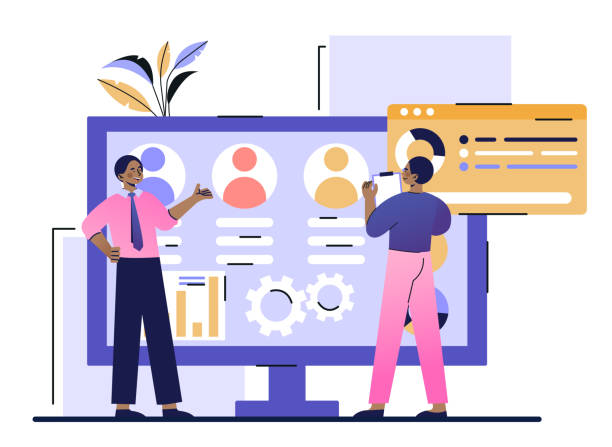
SEO-optimized website design goes beyond a strong technical structure and includes precise optimization of each web page’s internal elements, which is called On-Page SEO.
This #guidance and #explanatory section helps you ensure that your content is not only appealing to users but also understandable and rankable for search engines.
The first and most important element is the Title Tag.
This tag should include the page’s main keyword and describe the page content attractively and concisely.
The title tag is the first thing users see in search results, so it plays a vital role in the Click-Through Rate (CTR).
The second element is the Meta Description.
Although these descriptions do not directly influence ranking, an appealing meta description can encourage users to click on your link.
Strategic use of keywords in the main text (Body Content), but naturally and without overuse (keyword stuffing), is very important.
Structuring content using Heading tags (H1 to H6) helps search engines understand the hierarchy and importance of different content sections.
Each page should only have one H1 tag that includes the main keyword.
Image optimization is also highly important; using appropriate Alt Text, compressing images to reduce size, and choosing a descriptive file name all contribute to SEO improvement.
Internal & External Links also play an important role.
Internal links help search engines better understand your website’s structure, and external links to reputable websites can increase your page’s authority.
By observing these points in optimized site design and development, your website will become more appealing to search engines in terms of content and structure.
Are you frustrated with your e-commerce site’s low conversion rate? Rasaweb transforms your e-commerce site into a powerful tool for attracting and converting customers!
✅ Significant increase in visitor-to-buyer conversion rate
✅ Unparalleled user experience for increased customer satisfaction and loyalty⚡ Get a free consultation from Rasaweb!
5. The Importance of User Experience (UX) in SEO-Optimized Website Design

In recent years, the convergence between SEO and User Experience (UX) has become a critical factor in SEO-optimized website design.
Search engines now pay attention not only to website content but also to how users interact with it.
A website with poor UX, even with excellent content, will eventually struggle in rankings.
This #analytical and #specialized section examines this connection.
Factors such as Bounce Rate, Dwell Time, and the number of pages visited per session are all signals that search engines use to evaluate the quality of user experience.
A website with a user-friendly design that has easy navigation, an attractive visual layout, and accessible content encourages users to spend more time on the site and view more pages.
Loading speed, as mentioned earlier, directly impacts UX; today’s users expect pages to load instantly, otherwise, they leave the site.
Also, mobile-friendliness is essential for an optimized website design for search, as a large portion of web traffic comes from mobile devices.
Ensuring your website has a clear and logical Call-to-Action, as well as designing easy-to-fill forms, all contribute to improving UX and consequently SEO.
Ultimately, poor UX can lead to high bounce rates and low dwell times, which send negative signals to search engines and lower your website’s ranking.
Therefore, every SEO-optimized website design should be user-centric from the outset.
6. Link Building and Domain Authority in Website SEO Strategy

Link building or backlink building is one of the main pillars of Off-Page SEO that plays a significant role in your domain authority and ultimately your website’s ranking.
In the field of SEO-optimized website design, although link building is not directly related to technical design, having a website with a suitable structure and high-quality content is a necessary prerequisite for success in a link-building strategy.
When other websites link to your site, this is considered a vote of confidence by search engines.
The more numerous and higher quality these links are, the higher your website’s Domain Authority will be.
Of course, quality precedes quantity; one link from a reputable and relevant website is worth far more than dozens of links from low-quality and spammy websites.
There are various methods for link building, including producing valuable and shareable content, connecting with bloggers and influencers, and using advertorial (sponsored post) methods.
In this #guidance section, you are advised to avoid unnatural and black-hat link-building methods, as these methods may yield short-term results but will ultimately lead to penalties from search engines and a sharp drop in ranking in the long run.
Furthermore, ensuring that your website is properly crawled by search engines and your pages are indexable is essential to fully leverage the power of links.
Therefore, in completing website design with an optimization approach, special attention must also be paid to link-building strategies to maximize your website’s domain authority.
7. Website SEO Performance Analysis and Monitoring Tools
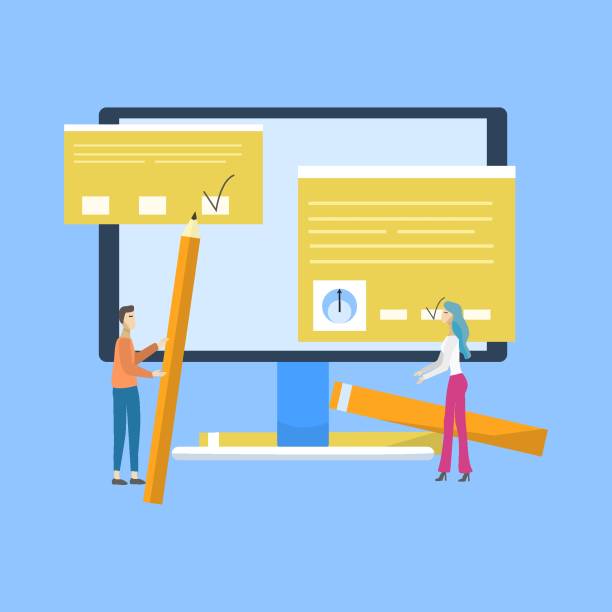
After implementing an SEO-optimized website design, your work is not finished.
Search engine optimization is a continuous process that requires ongoing analysis, monitoring, and improvement.
This #analytical and #news section shows you how to measure your website’s SEO performance and what tools to use for this purpose.
Analytical tools such as Google Search Console and Google Analytics are among the most fundamental tools for any website.
Google Search Console provides you with information on how your website is seen in search results, the keywords you rank for, technical issues related to crawling and indexing, and backlinks.
Google Analytics also provides comprehensive information on website traffic, user behavior, traffic sources, and conversion rates.
Continuous monitoring of keyword rankings, organic traffic, bounce rate, dwell time, and conversion rate helps you identify the strengths and weaknesses of your SEO strategy.
Based on this data, you can make necessary changes and re-monitor their effectiveness.
This is a cyclical process of continuous optimization that helps your website maintain good performance in search results in the long run.
Below is a table of key SEO performance indicators (KPIs) and their associated tools, which are essential for any website design optimized for search engines:
| Key Performance Indicator (KPI) | Description | Monitoring Tools |
|---|---|---|
| Organic Traffic | Number of visitors coming through natural search results | Google Analytics, Semrush, Ahrefs |
| Keyword Ranking | Website’s position for specific keywords in search results | Google Search Console, Semrush, Ahrefs |
| Bounce Rate | Percentage of visitors who view only one page and leave the website | Google Analytics |
| Dwell Time | Average time users spend on the website | Google Analytics |
| Click-Through Rate (CTR) | Percentage of clicks on the website link in search results relative to the number of impressions | Google Search Console |
| Backlinks | Number and quality of links received from other websites | Google Search Console, Ahrefs, Semrush |
8. Common Mistakes in Website Design and SEO and Their Solutions
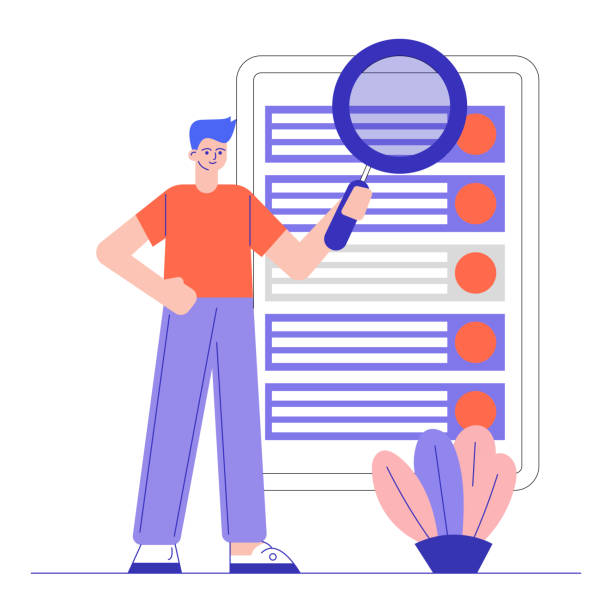
Even with the best intentions, you might make mistakes in the process of SEO-optimized website design that can jeopardize your website’s performance in search results.
This #thought-provoking and #guidance section helps you avoid these pitfalls and smooth your optimization path.
One of the most common mistakes is ignoring website loading speed.
A slow website not only provides a bad user experience but is also penalized by search engines.
The solution is to take image optimization, caching, and choosing a reputable hosting provider seriously.
Another mistake is plagiarism or producing low-quality content.
Search engines value unique, valuable, and comprehensive content.
Producing duplicate content or content that does not provide useful information can harm your ranking.
Also, excessive use of keywords (Keyword Stuffing), as mentioned before, will not only not help but will have the opposite effect.
Keywords should be placed naturally within the text.
Ignoring On-Page SEO elements like title tags and meta descriptions, or failing to optimize images, are also common mistakes.
Many web designers prioritize visual aspects and consider SEO in the final stages, whereas SEO should be considered from the very beginning of the search engine optimized website design process.
Lack of mobile compatibility, not using an XML sitemap, and improper URL structure can also harm website SEO.
To have a successful SEO-optimized website design, all these details must be carefully considered, and the website continuously reviewed from both a technical and content perspective.
Do you have an e-commerce site, but your sales aren’t what you expect? Rasaweb solves your problem forever with professional e-commerce website design!
✅ Significant increase in conversion rate and sales
✅ Unparalleled user experience for your customers
⚡ Click to get a free consultation with Rasaweb!
9. The Future of Smart SEO-Optimized Website Design and New Trends

The world of SEO and SEO-optimized website design is constantly evolving.
What is considered the best practice today might become obsolete tomorrow.
Therefore, awareness of new trends and preparing the website for the future is of high importance.
This #news and #analytical section examines future trends that every web designer and business owner should pay attention to.
One of the most important future trends is Voice Search SEO.
With the increasing use of voice assistants like Siri, Google Assistant, and Alexa, voice searches are on the rise.
These searches are usually longer and more conversational.
Therefore, optimizing content to answer complete questions and long-tail keywords (long-tail keywords) is gaining increasing importance.
Artificial intelligence and machine learning, especially Google’s algorithms like BERT and RankBrain, play a greater role in understanding user intent and providing more relevant results.
This means that your content should not only include keywords but also genuinely answer users’ questions and address their needs.
Videos and podcasts, as popular content formats, will also gain more importance, and their optimization for search engines will be essential.
Page Experience and Core Web Vitals, which Google has announced as ranking factors, will also become more important in the future.
These factors include loading speed, interactivity, and visual stability of the page.
To stay at the top of the competition, every search-optimized website design must be flexible and able to adapt to these changes.
10. Countless Benefits of an SEO-Optimized Website Design for Your Business

At the end of this #engaging and #explanatory article, we want to emphasize the countless and long-term benefits of an SEO-optimized website design for your business.
Investing in SEO and website optimization is more than an expense; it’s a strategic investment that brings significant returns.
The most important benefit is the increase in organic and targeted traffic.
When your website ranks high in search results, it literally places your business storefront in front of thousands of potential customers who are looking for your services or products.
This traffic, unlike traffic from paid advertising, is free and sustainable, leading to increased brand awareness and business credibility.
Furthermore, an SEO-optimized website design leads to an improved user experience.
As mentioned earlier, many SEO factors, such as loading speed and mobile compatibility, directly contribute to improving user experience, which in turn increases Conversion Rate and customer loyalty.
Finally, SEO is a powerful tool for better understanding the market and competitors.
By analyzing keywords and competitor performance, you can gain valuable insights into market needs and your competitors’ strengths and weaknesses.
In summary, SEO-optimized website design is a comprehensive strategy that not only helps you get seen in search results but also assists in the sustainable and long-term growth of your business in the digital world.
This is not just a website, but a valuable asset for the future of your business.
Frequently Asked Questions
| Row | Question | Answer |
|---|---|---|
| 1 | What is an SEO-optimized website? | It is a website designed and developed following Search Engine Optimization (SEO) principles to achieve higher rankings in search results. |
| 2 | Why is having an SEO-optimized website important? | It increases visibility, attracts organic traffic, boosts conversions, and builds brand credibility, all of which contribute to business growth. |
| 3 | What are the key elements of SEO-optimized website design? | Technical SEO (speed, mobile-friendliness), On-Page SEO (keywords, content), User Experience (UX), and website security (HTTPS). |
| 4 | How does website speed affect SEO? | Faster sites improve user experience, reduce bounce rates, and are favored by search engines, leading to better rankings. |
| 5 | Is mobile compatibility important for SEO? | Absolutely. Google uses mobile-first indexing, so responsive design for mobile is crucial for ranking. |
| 6 | What role does content play in SEO-optimized website design? | High-quality, relevant, and keyword-optimized content is fundamental for attracting users and signaling relevance to search engines. |
| 7 | What is keyword research and why is it important? | Finding popular search phrases people use. This process helps align content with user intent and attracts relevant traffic. |
| 8 | How is User Experience (UX) related to SEO? | Good UX (easy navigation, readability) keeps users on the site longer, reduces bounce rates, and sends positive signals to search engines. |
| 9 | What is a Sitemap and how does it help SEO? | It is a file that lists all pages on a site. It helps search engines crawl and index your site more effectively. |
| 10 | Should I use HTTPS for my website? | Yes, HTTPS provides security and is considered a small ranking factor. It also increases user trust. |
And other services of Rasa Web Advertising Agency in the field of advertising
Smart Sales Automation: An innovative service for increasing digital branding through user experience customization.
Smart Customer Journey Map: Revolutionize website visits by optimizing key pages.
Smart Customer Journey Map: A quick and efficient solution to improve SEO ranking by focusing on Google Ads management.
Smart Direct Marketing: An effective tool for customer acquisition with the help of attractive UI design.
Smart Website Development: Designed for businesses looking to increase sales through key page optimization.
And over hundreds of other services in the field of online advertising, advertising consulting, and organizational solutions
Internet Advertising | Advertising Strategy | Advertorial
Sources
SEO-Optimized Website Design at IranHost
SEO Website Guide from SEO Iran
SEO Design Tips from HamyarWP
SEO-Optimized Website Design Tutorial on Aparat
? Are you ready to take your business to the peak in the digital world? Rasaweb Afarin Digital Marketing Agency, with expertise in modern UI website design, professional SEO, and targeted advertising campaigns, is your guide to success. With us, establish a powerful and lasting online presence.
📍 Tehran, Mirdamad Street, Next to Central Bank, Southern Kazeroun Alley, Ramin Alley No. 6

